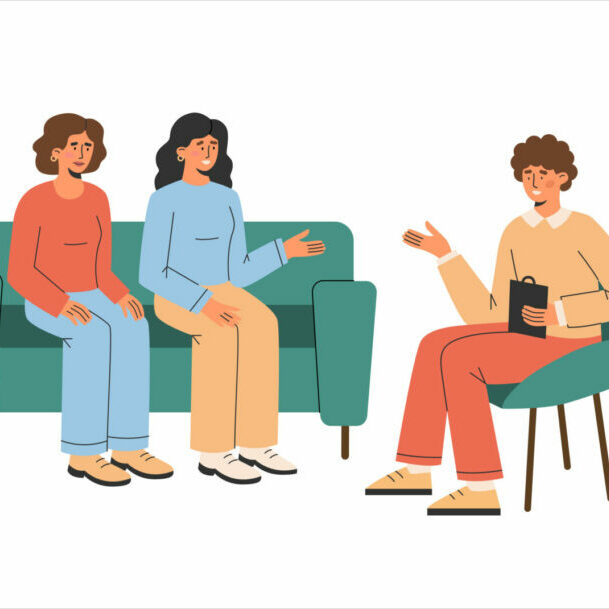How to Heal from Religious Trauma

While for some, religion has provided affirmation, direction, and meaning, religion has been the cause of trauma for others. This can be particularly profound among queer and LGBT people who grow up in religious households that may not accept their sexual and/or gender identity.
Such experiences can lead to deep-seated feelings of shame, guilt, and a sense of unworthiness. Understanding the difference between personal belief systems and universal truths is crucial in this context, as it lays the foundation for healing and self-acceptance from religious trauma.
How can religion create psychological distress?
The psychological impact of religious trauma can be likened to brainwashing, where harmful ideologies are ingrained in people from a young age. For LGBT and queer persons, the conflict between their identity and religious teachings can result in lifelong challenges, including internalized messages that they are bad or even harmful.
The journey to – unlearn these harmful beliefs, accept one’s true self, find compassion for one’s experiences, and untangle the positive impacts of religion (where they existed for the person) – is often long and fraught with emotional hurdles.
At times, religion has also been the stated reason for others to walk away from friendships or family relationships with someone who is LGBT or queer. This experience can lead to insecure attachments and the expectation of future abandonment for “just being you.”
What Can You Do to Heal from Religious Trauma?
- Identify Differences Between Belief and Truth – Healing begins with recognizing that beliefs are powerful thoughts we assign meaning to, which are not always rooted in truth. This realization, which is often contrary to the teachings of many religions, is pivotal for overcoming anxieties and fears instilled by religious teachings.
- Identify and Breakdown Rigid Patterns of Thinking – To dismantle harmful ideologies, it’s essential to practice honesty with oneself, seek supportive communities, and foster patience and self-compassion. This process is gradual and requires persistent effort.
- Allow for Embracing Faith – Finding a balance between one’s LGBTQ+ identity and faith is possible. Faith is deeply personal and subjective, capable of encompassing diverse interpretations and beliefs that can affirm one’s identity rather than deny it. If faith seems important to you, consider exploring spiritual opportunities that affirm you and your queer identity.
- Seek Resources to Heal – The internet offers various resources for those navigating the intersection of LGBT and queer identity and faith, from platforms like Dare to Doubt and Believe Out Loud to educational content such as Vincent Mascarenas’ TEDx talk and the “This Little Light of Mine” Podcast.
Additionally, numerous books delve into queer/LGBTQ+ Religion and Spirituality, providing further insight and support.
- Coming Out Spiritually – The Next Step (Huerta, C)
- A Tale of Two Omars – A Memoir of Family, Revolution, and Coming Out During the Arab Spring (Sharif, O)
- Among the Eunuchs – A Muslim Transgender Journey (Jagiella, L)
- Becoming Eve – My Journey from Ultra-Orthodox Rabbi to Transgender Woman (Stein, A)
- Casting A Queer Circle – Non-Binary Witchcraft (Minai, T)
- Towards a Theology of Same-Sex Marriage – Squaring the Circle (Herbert, C)
- Stranger at the Gate – To Be Gay and Christian In America (White, M)
- The World and All That It Holds (Hemon, A)
How Can Therapy for Religious Trauma Promote Healing?
The support of a religious trauma therapist is invaluable in navigating the complex emotions and challenges associated with religious trauma. The therapeutic process offers a structured approach to healing. Some examples of the support and strategies provided include:
Self-Exploration and Identity Affirmation – Therapy for religious trauma uses techniques like journaling, identity-focused therapeutic discussions, and art therapy to help people explore and affirm their identities beyond religious constraints.
Challenging Internalized Shame – Religious trauma therapists may use cognitive-behavioral interventions, attuned listening and highlighting discrepancies in thoughts and reality, and positive affirmation exercises, to help people combat the shame instilled by conflicting religious teachings.
Supportive Community Engagement – Engaging with LGBT and queer support groups and/or encouragement from a religious trauma therapist to participate in advocacy or cultural events can significantly reduce feelings of isolation and foster a sense of belonging.
Reframing Spirituality – Interfaith dialogues, in-depth exploration of spirituality and personal values, and mindfulness practices enable people to form a spirituality that embraces their LGBT or queer identity.
Developing Coping Strategies – Techniques for stress management, emotional regulation, and problem-solving are essential for managing the impacts of religious trauma and are a foundational component of therapy for religious trauma.
Narrative Reconstruction – Rewriting one’s life story to include a positive integration of queer and LGBT identities and, if chosen, spiritual beliefs, can be empowering.
Embracing Self-Compassion – Cultivating kindness towards oneself is vital in healing from religious trauma, utilizing practices such as mindfulness-based self-compassion exercises and compassion-focused therapy.
Unburdening Traumatized Parts of Oneself – Therapy for religious trauma, such as internal family systems therapy (IFS), can support the witnessing of various parts of oneself. In doing so, inner compassion and curiosity can take over the roles played by traumatized parts, allowing them to heal, and leading to a more stable and empowered sense of self.
The Power of Integrating Spirituality and LGBT and Queer Identities
Integrating one’s spirituality with their LGBT or queer identity is a nuanced and deeply personal process that requires acknowledging the inherent challenges and actively seeking out strategies that support and nurture both aspects of one’s identity.
This integration process often involves reconciling conflicting feelings that arise from previous religious teachings with the truths of one’s sexual or gender identity; fostering supportive relationships and affirming environments; identifying inclusive safe spaces for exploration and expression; and dispelling myths about the compatibility of queer identities with spiritual doctrines.
While complex, the successful integration of spirituality with LGBT and queer identity not only enriches the individual’s life but also strengthens the fabric of the community by fostering a greater understanding and acceptance of diverse identities. This journey, whether supported by religious trauma therapy or not, offers profound opportunities for growth and transformation, affirming the intrinsic value and worth of every individual irrespective of their spiritual beliefs or sexual orientation.
We’re Here to Help!
Healing from religious trauma is a deeply personal and often challenging journey, especially for LGBT and queer people. It requires recognizing the impact of harmful beliefs, seeking supportive resources, and engaging in therapeutic practices designed to affirm one’s identity and beliefs. With patience, self-compassion, and the right support, healing and integration of one’s faith and identity are possible.
Remember, the path to healing from religious trauma is ongoing, and it’s important to continuously seek out resources, communities, and practices that support one’s well-being and growth. You’re not alone in this journey and Tandem Psychology’s religious trauma therapists would be honored to join you and support you in it.
This blog is made for informational and educational purposes only. It is not medical advice. The information in this blog is not intended to (1) replace a one-on-one relationship with a qualified licensed health care provider, (2) create or establish a provider-patient relationship, or (3) create a duty for us to follow up with you.



